Episode 2: The Ferrari Pinin, A V12-Powered Sedan From 1980
It didn’t drive. For 31 years. Which is not surprising, considering that it was a Ferrari that wasn’t allowed to exist. With four doors, how outrageous! As if the pope would tango on St. Peter’s square at midnight.

It didn’t drive. For 31 years. Which is not surprising, considering that it was a Ferrari that wasn’t allowed to exist. With four doors, how outrageous! As if the pope would tango on St. Peter’s square at midnight.
Ferrari has kept this ideology until today, for the most parts at least. Shall other manufacturers ruin their reputations by building business sedans, plump SUVs or even tractors. Ferrari doesn’t, at least not yet. Because they are not named Lamborghini, Maserati or Porsche.
What we don’t know is whether or not Ferrari is angry about Gabriele Candrini. After all, the classic car dealer from Modena managed to turn a 30 years old idea scribble into a working automobile. It’s called the “Pinin”, as a hommage to company founder Battista “Pinin” Farina, and it shows how Pininfarina would have imagined a four-door Ferrari in 1980. With sleek, strong lines that would go down in history, and most importantly: A 5-liter flat V12 with four Weber three-barrel downdraft carburetors, hooked up to a 5-speed manual gearbox.
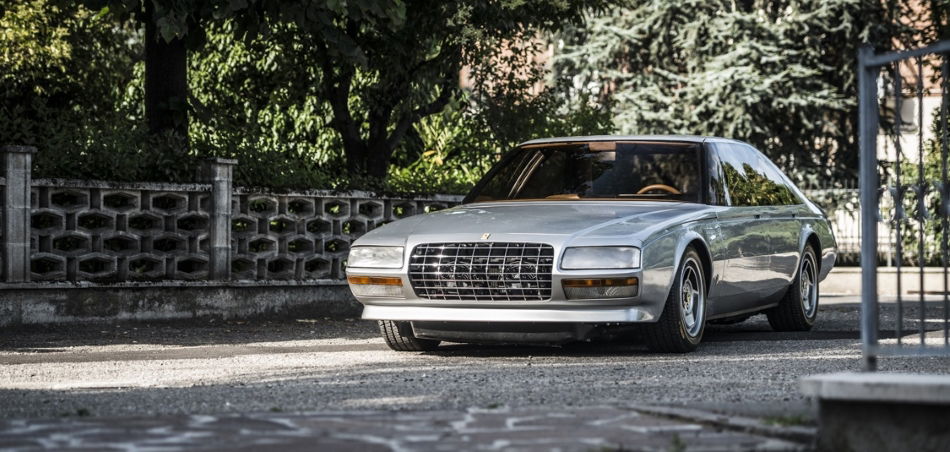
The car that was presented to the public at the 1980 Turin Auto Show however was nothing more than a dream. Like many times before, Pininfarina had only installed an empty engine block under the hood, and without a drivetrain and with electronics reduced to the bare show car essentials, the car wasn’t going anywhere. If you saw it in action on the cover of a car magazine from that era, that was the work of the image editor. The Pinin was nothing more than a vision - until Candrini arrives.
In 2008, the car changed its owners - from former Belgian Ferrari importer Jacques Swaters to Gabriele Candrini, who paid €176,000 for the stunning looking sedan. His dream was to get the Pinin running, and full of anticipations, he commissioned former Ferrari sport director Mauro Forghieri (83) and his team Oral Engineering to make the Pinin find its feet - which resulted in one and a half years of hard work.
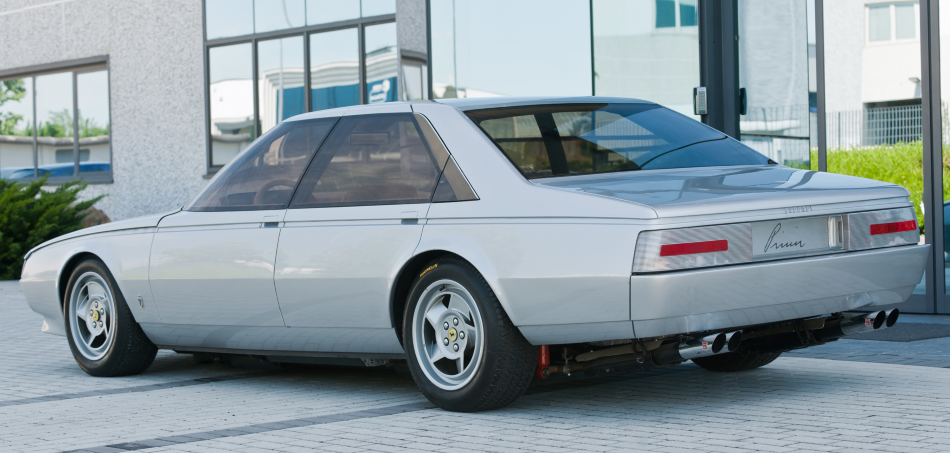
Under the low-slung hood, they exposed the chassis of a Ferrari 400 GT, combined with the rear subframe of a 512 BB that was mounted between the front axle and the cockpit. The flat V12 had to be squeezed in there, and as a consequence, it now sits further up and closer to the front than in 1980. And whilst in the 512 BBs the gearbox sits below the crankshaft, it had to be moved behind it in the Pinin - it’s connected via a custom-built linkage piece. The Pinin’s 120 liter fuel tank also had to be made from scratch, as well as the wiring harness - on the Turin Auto Show, it only had to power a couple of flashy lights instead of an entire car.
Ferrari expert Marcel Massini estimates that it cost more than a million Euros to get the Pinin running, but Candrini avoids giving a specific number. However he admitted that the engine alone already cost more than what he had paid for the Pinin in the first place.
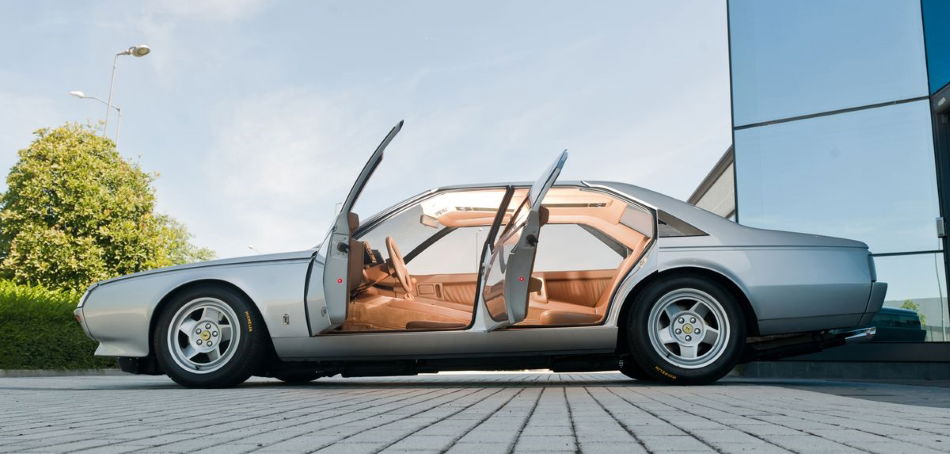
But most importantly, 31 years after being unveiled, the Pinin can now be driven around. A bit, at least, as long as the road isn’t too bumpy - back at the Turin Auto Show, the Pinin could barely even be pushed without the oil reservoir of the dry sump system scraping on the floor. The specialists at Oral engineering managed to fix this problem, though - at least to such an extend that the Pinin can be driven without any major damage to its undercarriage.
It also has very little steering angle, and the turning radius is accordingly majestic. Reason for that is the huge flat V12 engine that takes up so much space under the hood that there simply wasn’t much left for the wheel wells.
And speaking of that engine: Don’t mistake it for a boxer engine! The firing order is the one of a standard V12, unlike in a boxer engine where two opposing cylinders reach the slack point at the same moment. The Pinin’s engine is indeed a V12, but with a 180° angle between the cylinder banks - as weird as that may sound.
Sure, the 60° V12 from the 400i would have been more practical - but in 1980, Ferrari was already working on the flat V12 for the Testarossa, which went into production four years later. Also, the Pinin’s V12 was based on the dominating Formula 1 engine from the late 70s - another reason to justify the rather complex installation procedure.
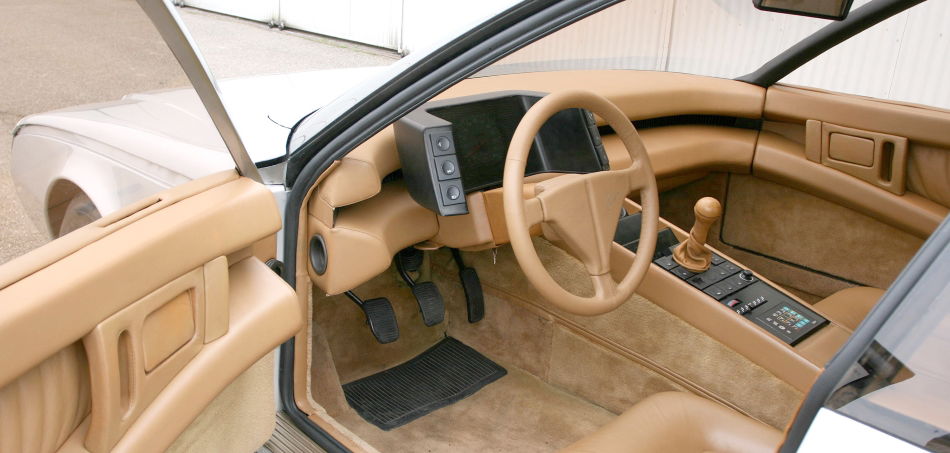
For Sergio Pininfarina, the Pinin was more than just an apprentice piece. He was hoping for a good deal, especially considering that competitor Maserati was making great profit with their boxy sedan named Quattroporte, whilst the sporty coupé versions of it stood no chance against its rivals from Ferrari. A similar story happened in the United Kingdom: Aston Martin also only survived the late 1970s thanks to the bizarre 4-door Lagonda. The Pinin however would have driven circles around both of them, as it was lighter, more nimble, and considerably faster.
Things were looking good for the project. Ferrari’s general manager from that era, Eugenio Alzati, said in an interview: “Many of our customers arrive by plane. We would have picked them up at the airport with our sedan, and would instantly have sold another Pinin”. Even Ferrari’s legendary CEO, Enzo Ferrari, was pleased with the concept - back then he was suffering badly from the Fiat ownership and had to be chauffeured around in a 131 or Argenta, which were both way below his standards.
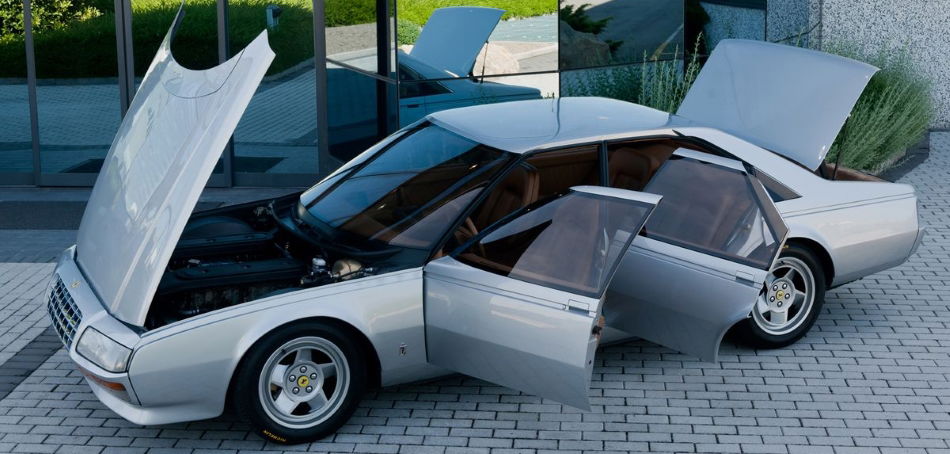
So, surprisingly enough, the Pinin had Enzo’s approval - the fact that it still didn’t make it into production is not to be blamed on the mood of the charismatic choleric. Instead, as Alzati claims, Ferrari officials were worried that they would become completely dependent on Pininfarina, as they could neither develop nor build the sedan by themselves.
The official reason for the end of the Pinin that was published in several newspapers: For $150,000, American buyers would have expected the most quiet and comfortable sedan on the market - which, according to former Ferrari marketing manager Luca Matteoni, would simply have no longer been a Ferrari.
There were many dealers and customers who would have fancied the Pinin, but after three years of Segio Pininfarina begging both Ferrari and Fiat for a production model, the project was ultimately cancelled. And so, one of the best looking sedans of the 1980s has died down in an area of conflict between Maranello and Turin. Still, similarities to its design can be found on many production sedans designed by Pininfarina, for example on the Peugeot 405 and 605 as well as on the Cadillac Seville STS. And at least the original concept has now been turned into a working automobile, 31 years after being unveiled at the Turin Auto Show.
Take a look at this gallery with some more detail shots of the Pinin, as well as some of the early design sketches:
Also, feel free to check out Part 1 of this series, about the Mercedes Benzomino and El Benzo:
I really hope you guys enjoyed this post! I love writing this series, but these articles always take so long to make - it’s been over a month for this one!
What do you think of the Pinin? Comment below!
Tobi aka The Stig’s German Cousin
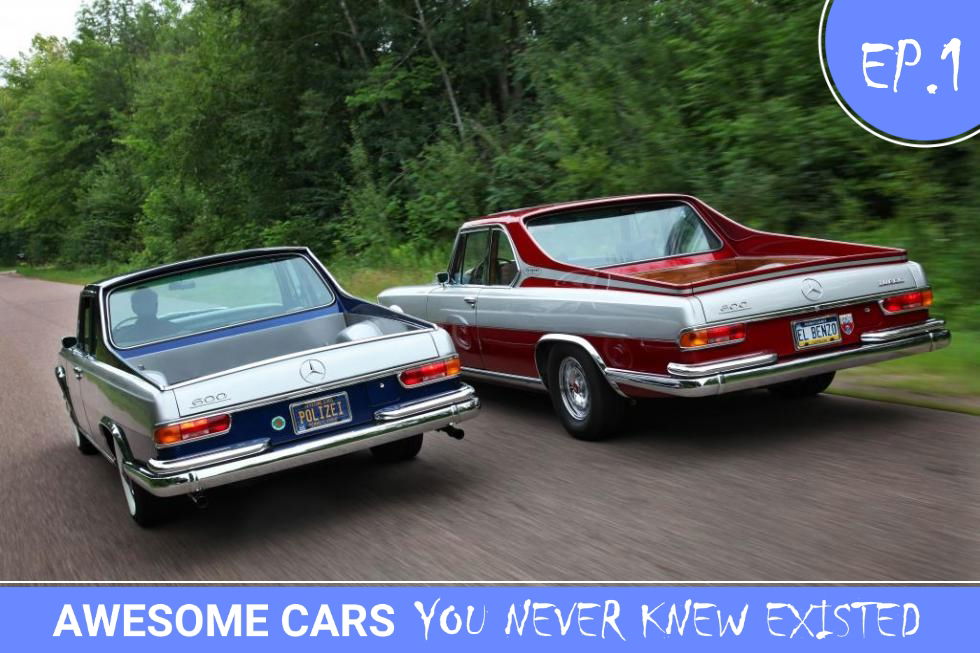
Comments
[DELETED]
A carbureted flat 12!Dammn that’s cool!
maybe do an article about the skoda favorit from the 1930s
it was made to fill up a hole beetween the superb and the rapid
Welcome: Online free loan for individuals with very dynamic team to the task.
l have a capital that will be used to grant short term and long term loan to any serious business minded individual who wish to assess this loan.There is no problem even if you are registered in your home country and do not have access to the financing. Please contact me on the following e-mail Lavalmichelle1953@gmail.com to know the conditions of granting loans and financing big eruopean banks without harassment and say goodbye to your financial problems.
Please note: l can assist in the following areas below.
Financial assistance
Investment loans
Credit redemption
Personal loans
Note:Be informed that we work to satisfy you. You can follow your file online to know its evolution.
Pagination